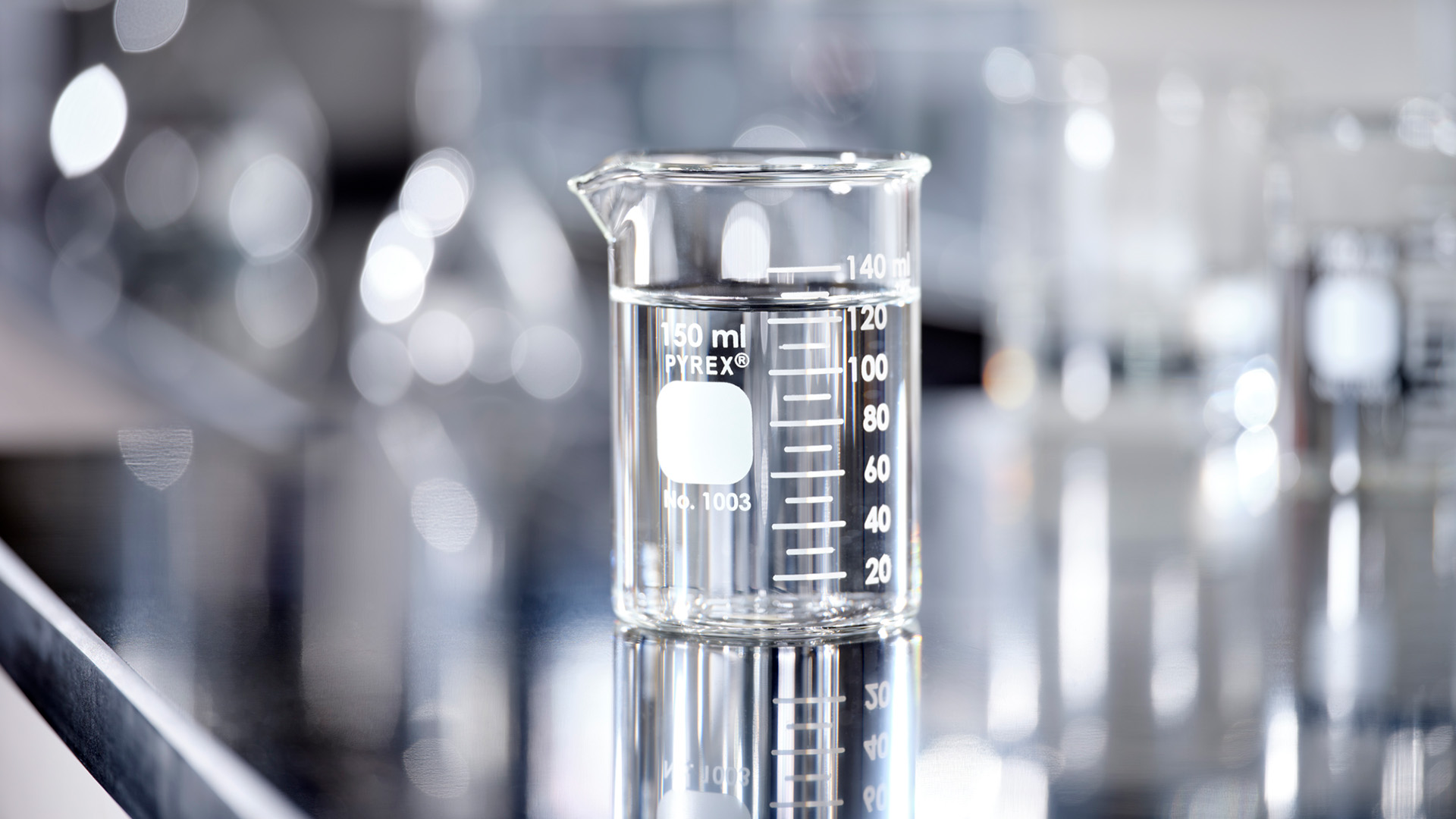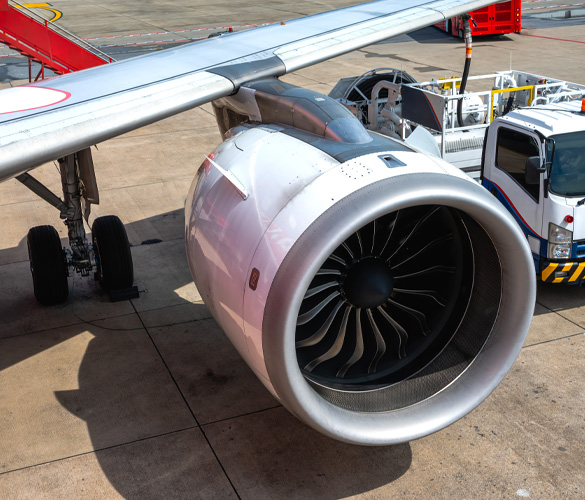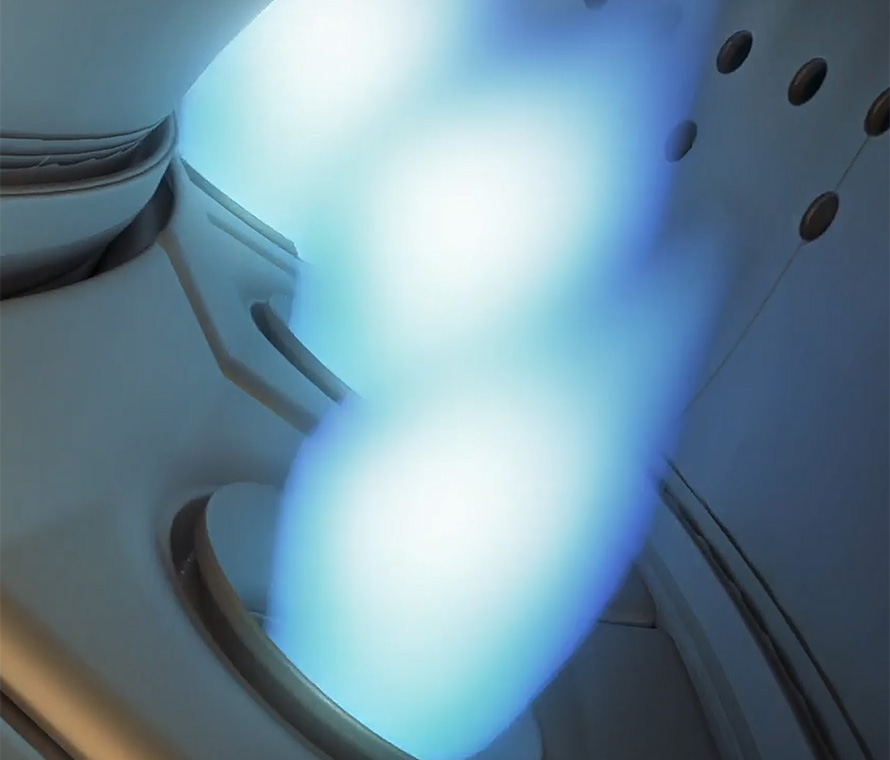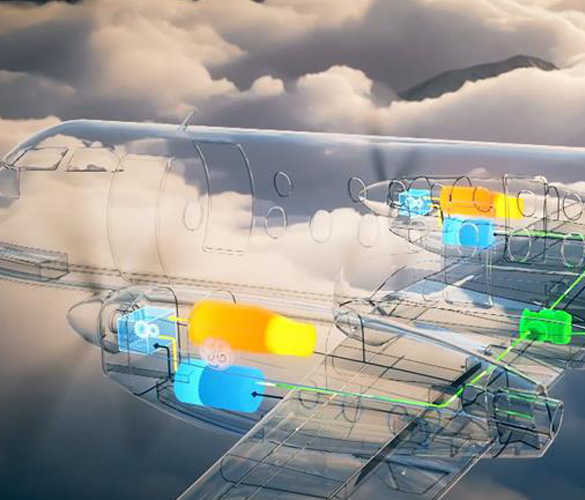Alternative fuels Sustainable Aviation Fuel (SAF) and more

Fuel flexibility in
engine designs
GE Aerospace supports the adoption of new fuels and is developing innovative technologies to improve fuel efficiency. GE Aerospace is actively involved in assessing and qualifying alternative fuels like Sustainable Aviation Fuel (SAF). We also support industry initiatives for the approval and adoption of 100% or unblended SAF and are advancing hydrogen combustion technologies. Additionally, hybrid electric propulsion technologies are a key focus area to help optimize engine performance.

Sustainable Aviation Fuel (SAF)
- Alternative jet fuel
- Developed with economic, social and environmental considerations
- Made from renewable sources like waste oils and agricultural residues
- Reduces lifecycle CO2 emissions by up to 80% compared to traditional jet fuels
- Key to aviation industry's decarbonization efforts
- Approved SAF is blended up to 50% with petroleum-based Jet A or Jet A-1 fuel
SAF at GE Aerospace
Since 2006, GE Aerospace has been working closely with SAF producers, regulators, and operators to help increase adoption of SAF for use in aviation.
All GE Aerospace jet engines can operate on approved SAF blends today. We are helping lead the industry to develop SAF that doesn’t require blending with conventional jet fuel.


What is drop-in SAF
- Drop-in SAF meets jet fuel standards and works with existing engines, airframes, and fuel infrastructure without modifications.
- 100% drop-in SAF is not yet ASTM International-qualified, an organization that develops technical standards.

Hydrogen combustion
CFM International, a 50-50 joint company between GE Aerospace and Safran Aircraft Engines, continues to advance hydrogen combustion technologies for testing. This includes efforts to mature hydrogen engine combustion, fuel system, and control system technologies.

Hybrid electric
For over a decade, GE Aerospace has been advancing hybrid electric propulsion technologies. These technologies can help optimize engine performance—improving fuel efficiency—and are key to the aviation industry’s efforts to reduce carbon emissions for a smarter and more efficient future of flight. Hybrid electric systems are also compatible with alternative fuels, as well as Open Fan*, and next-generation engine core designs.
*Revolutionary Innovation for Sustainable Engines (RISE) is a technology development and demonstration program and registered trademark of CFM International, a 50-50 joint company between GE Aerospace and Safran Aircraft Engines. Open Fan is one of the key technologies of the CFM RISE program. It is not a product.